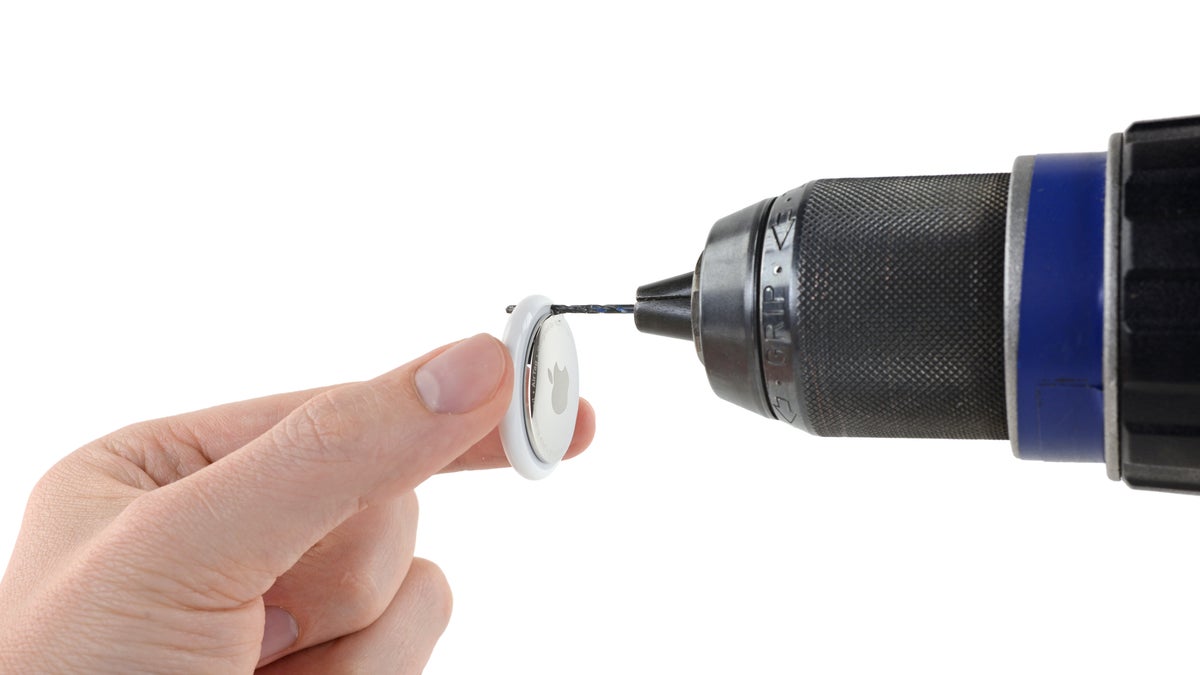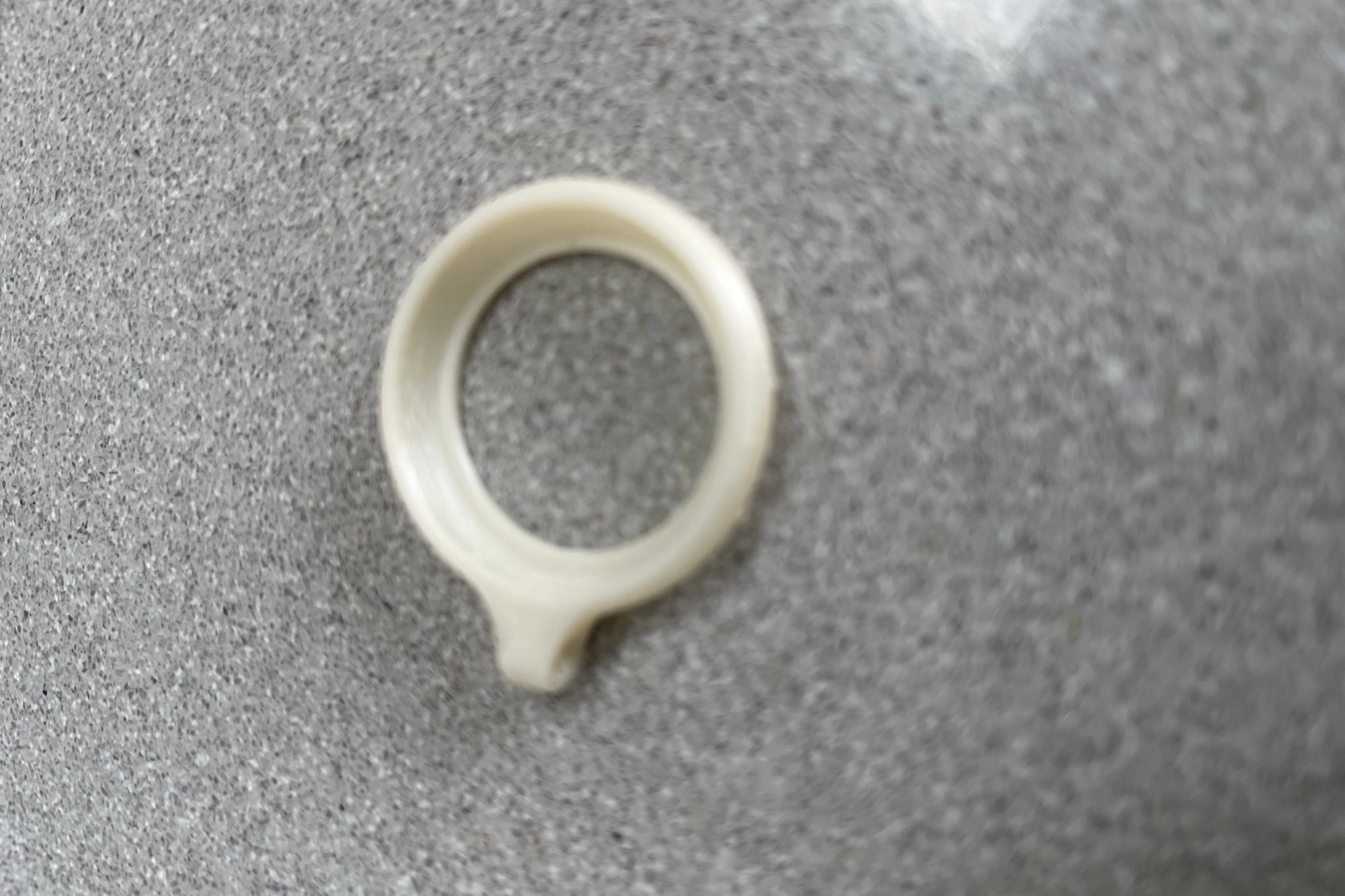AirTag teardown helps you open it up; reveals a special speaker

Apple introduced the long-anticipated AirTags during the "Spring loaded" event back in April, and ever since then, we've been looking forward to seeing the guts of the tiny but mighty tracker.
The wait is over thanks to the folks from iFixit, who took apart not only Apple's AirTag but also Samsung's Smart Tag, as well as Tile's Mate tracker - some may say "the original tracker". The investigation led to a few takeaways, as well as more questions.
First of all, Samsung and Tile's gadgets are considerably bigger than the AirTag. This leaves them with some room for a dedicated keyring hole, and although the AirTag lacks one, it has managed to fit similar or better tech in a much smaller body.
The wait is over thanks to the folks from iFixit, who took apart not only Apple's AirTag but also Samsung's Smart Tag, as well as Tile's Mate tracker - some may say "the original tracker". The investigation led to a few takeaways, as well as more questions.
The AirTags have an ultra-wideband (UWB) chip which helps to locate an item more effectively. Samsung and Tile don't make use of a UWB chip on the tested units, but the Korean company will start selling a Smart Tag+ soon, which will take advantage of the tech, while Tile is also said to join the party soon.
If you'd like to take the risk, make sure you've removed the battery. Otherwise, the AirTag doesn't seem to have any chips, boards, or other tech parts sitting at the end of its plastic portion, so you should be safe. iFixit managed to get a perfectly functional AirTag with a dedicated keyring hole, which can save you enough money to get lunch and dinner, or even buy another AirTag!
Here's the drill : No keyring hole - no problem
Images courtesy of iFixit
The first surprise from the teardown comes right here, as the iFixit team has managed to drill a hole into their AirTag! It seems like it took them two attempts, with the second one being successful! They've used a 1/16-inch drill bit to punch a hole through the white plastic part of the tracker - at the very edge of it.To be clear, we don't advise you to try drilling a hole into your AirTag. There are quicker and more affordable ways to find a way to attach it to your keys. Check out our picks for the best AirTag accessories, and choose one according to your budget and style preference. There are great options which don't cost an arm and a leg (wink, wink, Hermès).

3D-printed AirTag holder
Manicure-breaking tech
You twist and turn on the backside of the AirTag, but this operation is far less simple if your hands a wet or oily. So, prepare some tissues. The small surface of the backplate doesn't help either.
Then you're welcomed by the user-replaceable battery. The folks from Cupertino and Korea have decided to go with the same CR2032 battery, said to last around 300 days for the Smart Tag and about a year on the AirTag. Tile uses a smaller CR1632 battery, so don't be surprised if you need to change it a bit earlier.
Apple has an excellent track record when it comes to speakers - Steve Jobs, Tim Co... Ok, sorry. The point is - the company knows how to make a good sound system, at least if we count after the iPhone 7 series. All of their phones post-single speaker era deliver great stereo speakers; AirPods are praised as some of the best TWS earbuds on the market, and the MacBook is a sound champ over in the laptop world.
The AirTag doesn't feature a traditional piezoelectric speaker, but little in this tracker is traditional. Upon opening AIrTag, you're welcomed by a very circular set of components. We don't know if it's intentional, but the inside kind of resembles Apple Park and the "spaceship" slapped in the middle of it (Apple's headquarters).
Then you're welcomed by the user-replaceable battery. The folks from Cupertino and Korea have decided to go with the same CR2032 battery, said to last around 300 days for the Smart Tag and about a year on the AirTag. Tile uses a smaller CR1632 battery, so don't be surprised if you need to change it a bit earlier.
No MagSafe. 'Yes' MagSpeaker.
The AirTag doesn't feature a traditional piezoelectric speaker, but little in this tracker is traditional. Upon opening AIrTag, you're welcomed by a very circular set of components. We don't know if it's intentional, but the inside kind of resembles Apple Park and the "spaceship" slapped in the middle of it (Apple's headquarters).
What's more exciting is that there's a button-like piece of plastic, which is supposed to mimic a traditional speaker unit surrounded by copper. This essentially turns the entire body of the AirTag into a magnetic speaker (hence MagSpeaker). We've seen similar tech being used in smartphones like the Huawei P30 Pro back in 2019, which vibrated the screen to make sound.
Although, as found recently by MaxTech, Samsung and Tile's speakers are louder, Apple's sound is more directional. Of course, its practical uses remain to be tested, but early impressions are good and suggest that despite not being as loud as the competition, the sound coming from the AirTag is noticeable even from a distance.
iFixit promises to go more in-depth with the second part of the teardown, where they show detailed board shots, chip rundown, and further details about the three trackers.
Follow us on Google News










![A new Android bug is making it impossible to install new apps. Are you affected? [UPDATE]](https://m-cdn.phonearena.com/images/article/176703-wide-two_350/A-new-Android-bug-is-making-it-impossible-to-install-new-apps.-Are-you-affected-UPDATE.webp)

Things that are NOT allowed:
To help keep our community safe and free from spam, we apply temporary limits to newly created accounts: